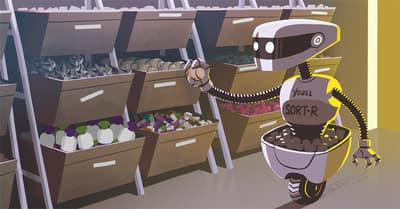Tagging posts properly for users and SEO

It can be hard to pick the right tags for a post. But they are important and that’s why we’ll explain how you can choose them. One of the most difficult things to do, as your site becomes bigger, is creating and maintaining a logical site structure. Tags and categories can help create that structure, allowing people to easily find posts that interest them.
When you use tags the wrong way, you can even make it harder for people to navigate your site. This isn’t just bad for users; using tags in the wrong way can be detrimental for your site’s SEO as well. Here, we’ll first dive into what tags do, followed by a good process for choosing them.
What happens when you add a tag?
When you add a tag to a post, that post is added to that tag’s archive. For instance, we have a tag page for keyword research. When we add a “keyword research” tag to this post, it’s added to that archive. That is, of course, very useful: when people click on the keyword research tag, they’ll find a complete overview of all posts on that topic. Also, Google will understand all the posts in this archive belong together.
When you add a tag that hasn’t been used before to a post, WordPress automatically creates a tag archive. If you tag very liberally, adding 10-20 tags to each post, each of them unique to each post, you’re creating dozens of archive pages.
If each of those archive pages only has 1 or 2 posts on them, they’re not very useful. First of all, they won’t help users find other related posts. And, secondly, they won’t help Google understand what your site’s about. In the past, we even saw plenty of sites that had an overload of tag pages get hit by Google’s Panda update.
From this we can conclude:
- You shouldn’t add too many tags to a post.
- You shouldn’t use tags that don’t relate the current post to any other post on your site.
But what should you do?
How to choose your tags
When you’re planning your blog posts, it’s likely you’ll have some over-arching themes. Those themes are probably your best tags. On yoast.com, for instance, we often write about SEO copywriting and Site structure, but also about WordPress, Schema.org or Google Analytics. These are just some examples of the tags we commonly use for our posts.
When choosing tags you should ask yourself:
- Which other posts does this post relate to?
- Which tag applies best to this group of posts? What’s the common denominator?
- Is that the best keyword choice for this topic?
You shouldn’t make up tags; they should be existing words or phrases. Words or phrases people search for. That’s why we’d advise performing keyword research first. In our Ultimate guide to keyword research, you can read how to go about that, step by step.
Optimize your tag page
You can even optimize your tag pages to try to make them rank well too. Our Yoast SEO plugin will help you with this. The content analysis will not only check the content of single blog posts or pages, but it ‘ll also run a check on your tag page. As a result, you’ll get detailed instructions on how to improve the content on it.
How to further optimize tag and category pages we explain in this extensive article on category SEO, so please check that out too. What you should remember is that when you’re doing your keyword research, deciding that something is going to be a tag is a valid choice!
Find related content with tags
There’s another advantage of tagging posts properly. When you’ve written a post and you’re wondering which other posts to link to, you can quickly browse through the tag that new post belongs to. This will help you find posts that you can link to from within your current post, to help visitors find related content even more easily. (If you think that’s too much work, you might want to consider using our Internal linking tool for that)
Go through them regularly
When you’ve chosen the right tags and tagged your posts nicely, you’re done for a while, but not forever! Your site structure, just as everything else on your site, requires regular maintenance. You might think of new topics to write about or the focus of your business might shift. So make sure to go through your tags regularly, remove redundant ones and check if you’ve added any new topics you’re writing about.
Choose your tags carefully
When you write your blog post, think about your tags thoroughly. Don’t make it a 2-second afterthought. They’re important for visitors and Google! The good thing about thinking about your tags is that it also immediately helps you find other posts to link to. Good luck with your tagging!
Read more: How to clean up your site structure »

Discussion (15)